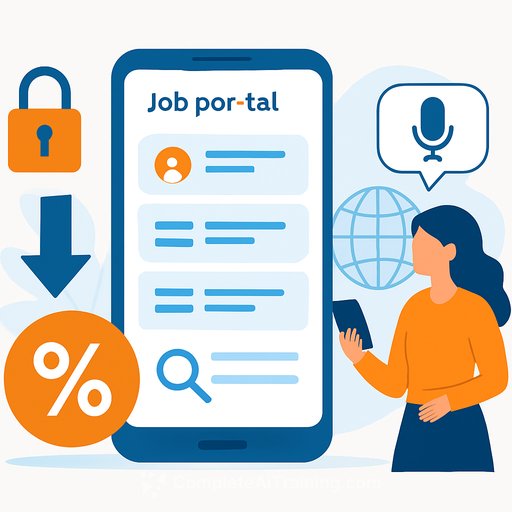Ontario's cautious move into AI: Practical steps every public servant can take now
Ontario has begun a tentative rollout of AI inside government. That signals opportunity and scrutiny in equal measure - especially with public debate already hot around tech in enforcement, trade, and infrastructure.
If you work in policy, service delivery, procurement, or communications, this is the time to get specific. Small pilots, clear guardrails, and honest reporting will make or break trust.
What "tentative use" likely looks like
- Low-risk pilots in back-office tasks (summaries, search, drafting), not front-line enforcement or eligibility decisions.
- Human-in-the-loop review on all outputs that affect people or budgets.
- Privacy, security, and data residency checks before any live use.
- Short pilot windows with an exit plan if value isn't proven.
Immediate actions for ministries, agencies, and municipalities
- List 5-10 tasks that are high-volume and rules-based. Prioritize those for pilots.
- Classify data: public, internal, confidential, personal. Keep personal and sensitive data out of general AI tools.
- Set approval tiers: what staff can try, what needs manager sign-off, and what must go to a review board.
- Adopt a risk framework. Start with Canada's Directive on Automated Decision-Making and the Algorithmic Impact Assessment.
- Use a recognized standard for model risk. The NIST AI Risk Management Framework is a solid starting point.
Directive on Automated Decision-Making (Government of Canada)
NIST AI Risk Management Framework
Procurement and contracts: add these clauses
- Security and privacy: data residency, encryption, logging, and incident reporting timelines.
- Bias and quality testing: pre-deployment tests, ongoing monitoring, and thresholds for pausing use.
- Transparency: model cards or equivalent documentation, version history, and change notices.
- Audit rights: access to logs and evidence for investigations and ATIP requests.
- IP and content: who owns outputs, how training data is handled, and how vendor models use (or don't use) your inputs.
- Kill switch: the right to suspend or terminate the system quickly if risks surface.
Guardrails that protect public trust
- Clear labels: if AI assists a decision or response, say so in plain language.
- Appeals: keep a human path to challenge decisions - with documented reasoning.
- Record-keeping: store prompts, outputs, and approvals for audit and learning.
- Scope control: no automated enforcement or benefits determinations without legislation, AIA, and independent review.
Where AI can help right now
- Summarizing long reports, briefings, and stakeholder submissions.
- Drafting correspondence and FAQs; staff still finalize.
- Search and retrieval across large document sets.
- Call-centre and 311 agent assistance with suggested responses.
- Translation support and plain-language rewrites.
- Document classification, forms triage, and meeting notes.
Be careful with forecasting, risk scoring, and any use that might affect rights or entitlements. Those require deeper testing, legal review, and stronger oversight.
Train your team and set the rules
- Publish an acceptable use policy: approved tools, banned data types, and review steps.
- Create short, role-based training: prompt basics, privacy, and quality checks.
- Engage unions, accessibility, privacy, and security early to reduce rework later.
- Nominate AI champions in each branch to collect lessons and share templates.
If your team needs structured upskilling, explore role-based options here: AI courses by job.
Governance you can stand up this month
- AI register: list every pilot, purpose, datasets, risk tier, and owner.
- Review board: privacy, security, legal, and program leads meet biweekly.
- Risk tiers: low (back-office text help), medium (staff-facing analytics), high (anything affecting eligibility or enforcement).
- Testing playbook: bias checks, red-teaming, and quality benchmarks before go-live.
- Sunset criteria: stop pilots that miss targets or raise unresolved risks.
Measure value without hype
- Pick 3-5 metrics: cycle time, error rate, cost per transaction, staff time saved, and client satisfaction.
- Run A/B tests. Compare AI-assisted vs. standard workflows.
- Publish short pilot memos: what worked, what didn't, what's next.
Why this matters now
Ontario is moving carefully - and the public is watching. With active debates on enforcement technology, major resource projects, and trade pressure, AI use will draw attention fast.
Keep the scope tight, document decisions, and show real service gains. That's how you earn the room to scale.
Want a quick way to help staff get fluent? Browse current options here: Latest AI courses.
Your membership also unlocks:




